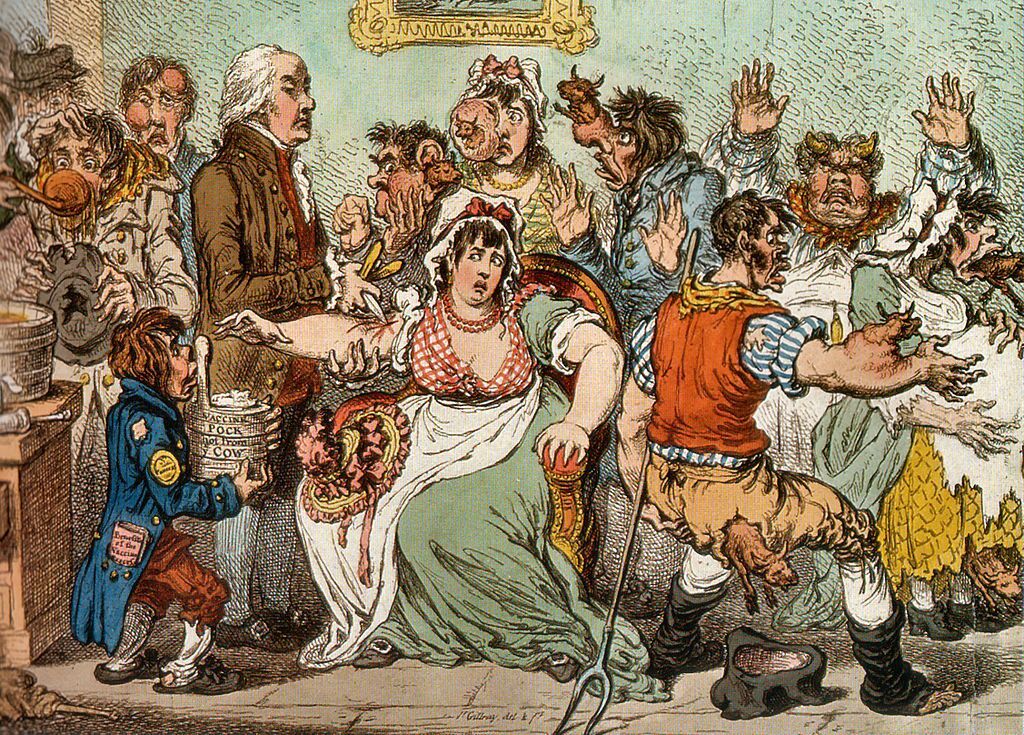
A vaccine is on the way – hooray! Most people cheered when elated Pfizer and BionTech scientists announced their news last week, revealing that early results showed their vaccine to be 90 per cent effective against Covid-19. It was the first in a line of good news stories about possible vaccinations coming on stream.
Will you be first in line, when it’s offered to you? I would, but I’ll have to wait until the NHS and care home sector, over 80s and other vulnerable groups are provided for. I’m happy with that, but there’s a big debate starting up now. Perhaps teachers or other key workers like bus drivers should be prioritised, as they face a potentially infectious public on a daily basis? Perhaps areas that have a higher rate of infection should go first? What about deprived areas, or those from black and minority ethnic backgrounds, as they have such a (relatively) high mortality rate from the coronavirus? And children – surely they should always be first in line? Well, that one’s easy. The new vaccines have not yet been tested on children, so that’s a ‘no’. But the others? No, they’ll have to wait their turn, as well.
Yet, alongside debates about who should be first in the queue, is a growing opposition from people who say they don’t want it and won’t have it. In September, one of a number of surveys showed that 10 per cent of adults would be very unlikely to get a Covid-19 vaccine when approved, with just 49 per cent saying they were very likely to get it. An article noted the extent of conspiracy theories spreading across Facebook and other social media, highlighting dissent in Totnes. It is not clear why Totnes should be particularly likely to reject vaccines, but there is already low take-up of the measles, mumps and rubella (MMR) vaccine in the town, compared to the national average.
Controversy about these childhood vaccines has flourished since London doctor Andrew Wakefield claimed a link between the MMR jab and autism, in a paper that was shown to be completely untrue. He was struck off the medical register for falsifying his research and other unethical behaviours, but the rumour mill has never stopped grinding. President Trump’s support for the ‘anti-vaxx’ cause helped to spread doubts, which are now spilling over into the debate about the value of a vaccination against the coronavirus.
People who are inclined to believe in conspiracy theories offer fertile soil in which to sow the seeds of doubt, and there are wealthy donors prepared to put big money into it. In the US, two organisations (World Mercury Project and Stop Mandatory Vaccinations) funded around 54 per cent of the Facebook ads spreading misinformation about vaccinations over a three-month period from December 2018 to February 2019. In the UK, vaccinations are not mandatory, nor are there plans to make them so. Instead, vaccinations are free on the NHS and a high level of trust in the health professionals delivering them has helped maintain a general acceptance of the recommended vaccines.

However, the organisation ‘Hope not Hate’ has warned that the campaign to spread misinformation and fear about a coronavirus vaccine is firmly embedded in the UK. Indeed, many British anti-vaxxers seem to be in the forefront of disseminating conspiracy theories that spread well beyond the vaccination itself. Hope not Hate suggests that the anti-vaccine movement can act as a gateway to more dangerous political ideologies, including QAnon conspiracy theories, antisemitism and holocaust denial.
The level of concern is such that Britain’s GCHQ has begun an offensive cyber-operation to tackle anti-vaccine propaganda being spread online by hostile states, with Russia as one of the main suspects. This may seem dramatic, but the influence of the disinformation campaigns is measurable. A survey this month suggested 54 per cent would ‘definitely’ take the vaccine, but this level fell to 48 per cent when participants were exposed to five false messages that often appear on social media. A fall of this size equates to around three million people. Such a big gap in vaccination uptake could threaten plans to achieve the high level of coverage needed for a return to life without stringent coronavirus restrictions and daily fears of infection.
Controversies have dogged vaccination ever since it first began in the 18th century. The term ‘vaccination’ links back to its origins in cows (‘vacca’ being Latin for cow) and milkmaids who’d contracted cowpox, a mild disease in humans. Physician Edward Jenner noticed they appeared to be protected against the far more deadly scourge of smallpox and used this knowledge to develop the earliest forms of inoculation. This provoked widespread panic about potential side-effects, which were lampooned by satirist James Gilray. When historians look back at 2020, current ‘anti-vaxx’ theories circulating on social media (including warnings of poisons or microchips to ‘control’ the recipient) are likely to be seen as just as bizarre as Gilray’s picture of cows growing out of vaccinated arms! What an indictment, they will say – that users of social media trusted such fantastical Facebook posts about vaccines, instead of official information from a government that is lacking in credibility.
Of course, not everyone who is sceptical about the vaccine is taken in by alarmist conspiracy theories – many express doubts that are more mundane, but also very telling. The message that vaccinations usually take ten years or more to develop has been heard loud and clear. How can we be sure this one is safe, they say; surely corners must have been cut to reach this point so quickly? Well, no. All the usual scientific and safety procedures have been followed – but the amount of funding that has poured in to support vaccine development has been phenomenal. It’s a bit like employing a team of ten professional decorators to paint your house, rather than trying to do it yourself with some help from just one painter at weekends. Of course, the large team would be quicker.
People ask, how do we know they’ve done what they said they would? Time frames seem to have shifted, and we need to know who is holding them to account. Well, yes – each study has been registered with national clinical trial registries, which is standard practice, and with the World Health Organisation (WHO), so it can collate and assess evidence as it arrives. Availability of funding and international collaboration have both helped to speed up the process. Usually, each of the phases of vaccine development would need to be completed and reported separately, with time-consuming funding applications between each phase, instead of all being funded at once.
To test the success of a vaccine being used for the main group in the study, a matched group is given a dummy injection, then the number who catch the disease in each group is compared. Waiting for ‘cases’ to come along might have taken longer when the first wave of disease waned across Europe in the summer, but this is no ordinary epidemic. Because it is world-wide, the researchers were able to continue recruiting from countries where the pandemic was still at its height, until enough people had caught the disease to show a difference between the groups.
At the start of any vaccine trial, researchers decide how many people from their study catching the disease is ‘enough’ to show conclusively whether the new product is working. Results are reported at fixed points along the way – and interim results appear so successful in the Pfizer trial that they could be considered conclusive. It is standard practice to report or even stop a trial in such circumstances, but the researchers have said they will continue recruiting until they have reached the number of cases they first planned for. In the meantime, they will prepare their results for other scientists to review. Then they will have to complete their reports to the regulators, so assessors at WHO and national regulators (like the British Medicines and Healthcare Devices Regulatory Agency (MHRA), European Medicines Agency (EMA) and US Food and Drugs Administration (FDA)) can check the results independently.
The whole process is available on the WHO website, with protocols (the researchers’ plan of action), being lodged at the start of the study. There are fixed stages for reporting, and both internal and external data monitoring groups, to ensure the research follows the protocol and the expected high ethical standards. Scientists place a high value on transparency and peer review, where outside experts in the field examine the reports and data, checking out the calculations made by the research team. They are usually sceptical if studies have not been independently assessed and published before being submitted for regulatory approval. A review paper published earlier this month, for example, includes a summary of how well eight of the vaccine trials are faring. It strongly criticises those (in Russia and China) that have begun using their products before the full trial process is complete.
WHO has a clear mechanism for emergency approval of vaccines, established when the Ebola epidemic was raging across parts of Africa. Two vaccines approved for emergency use in 2017 were rolled out, before being given full approval, two years later when longer term safety profiles were complete. Emergency approval requires a stringent assessment of quality, safety and performance, showing that the vaccine works. Overall, evaluation focuses on whether or not approving the vaccine without several years follow-up data, will do more good than harm. Reaching this decision needs time, and both scientific and ethical expertise. It draws on the whole dataset collected by the researchers, as well as reports and publications lodged with WHO and national regulators along the way. Some other trials, like the Oxford/AstraZenica one, have already lodged interim reports and publications and Pfizer have said that they are ready to do so. Moderna have announced their successful interim results this week too, although the UK did not order any of their product initially, so their delivery will be slower. Even so, it looks increasingly possible that we will have two vaccines available before the end of the year, or at least early in 2021.
Rolling out a whole-nation vaccine programme is a massive logistical challenge – but for now, let’s just recognise that identifying a vaccine in less than a year is an incredible achievement! I sympathise with those who have doubts: I don’t much trust our politicians either. But I do trust the scientists and the knowledge of immunology and vaccination that has developed over centuries – smallpox was eradicated worldwide by 1980, nearly 200 years after Jenner’s first inoculation programme provoked such alarm! Also, the research and approved regulatory processes are internationally recognised, so I trust them too. I’ll be in line, as soon as a vaccine is made available to me – you should be, too.




